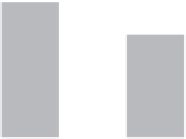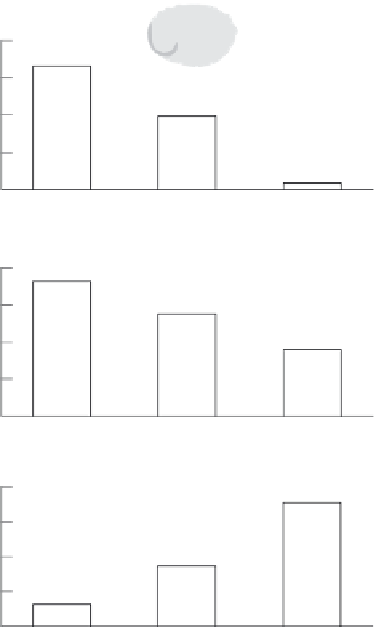Environmental Engineering Reference
In-Depth Information
the abalone fi shery sustainable even when all links in the food web (including the
otters) are fully restored.
Sea otters and recreational harvest infl uence red abalone populations in similar
ways but the effects of sea otters are much more pronounced. Abalone populations
in protected areas have much higher densities than areas with otters, while har-
vested areas generally have intermediate densities (Figure 9.5a). In addition, there
are differences in the size of abalone (Figure 9.5b) -
63-83% of individual abalones
in protected areas are larger than the legal harvesting limit of 178 mm, compared
with 18-26% in harvested areas and less than 1% in sea otter areas. Clearly the
effects of otters on the size class structure of their abalone prey mean that almost
none are left for human harvest. Finally, in the presence of sea otters the abalones
are mainly restricted to crevices where they are least vulnerable to predation (Figure
9.5c), and most diffi cult for fi shers to extract. Multiple-use protected areas are never
likely to be feasible where a desirable top predator feeds intensively on prey targeted
by a fi shery. Fanshawe's team recommends separate single-purpose categories of
protected area. But this may not work in the long term either. Maintenance of
abalone no-take areas when sea otters are expanding their range will eventually
require culling of otters, something that may not be politically acceptable.
(a)
Fig. 9.5
The infl uence
of human harvest and
otter predation history
on key features of the
abalone population at
sites on the Californian
coast: (a) mean abalone
density; (b) shell
length; (c) percentage
in crevices, where they
are least vulnerable to
predation. (Redrawn
from Fanshawe et al.,
2003.)
20
15
10
5
0
(b)
200
150
100
50
0
(c)
100
0
No harvest and
no otters
Harvest and
no otters
Otters and
no harvest














































































Search WWH ::

Custom Search